Spiti Valley is one of the most inhospitable regions of the country. The valley along with Ladakh and Tibet is one of the few regions of the world classified as ‘cold desert’ as per Koppen Climate Classification System.
The desert like conditions prevail because the region lies beyond the Greater Himalayan range contiguous with the Tibetan Plateau called the Trans-Himalayas.
There is very low precipitation in this region due to the ‘rain shadow effect’ caused by the 6000 to 7000 metres high Himalayan peaks, lying to the south of the valley.
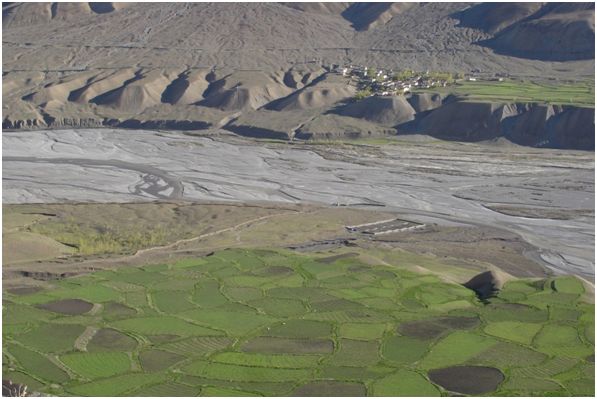
Spiti Valley is spread over 7,58,000 hectares of land. The valley is desolate and barren and cultivated fields are few and far between.
These cultivated areas occur along various nullahs and rivers including the Spiti River and strike a fine contrast with the bland surroundings.
With a population density of only 1.2 persons per square kilometre, it is one of the least populated regions of the world.
Climate is so harsh that survival alone in this region is an arduous task. There are limited livelihood options due to a long winter and a very short summer for any agricultural activity.
Socially most of the population is Buddhist and speak the Bhoti language which is similar to the Tibetan language.
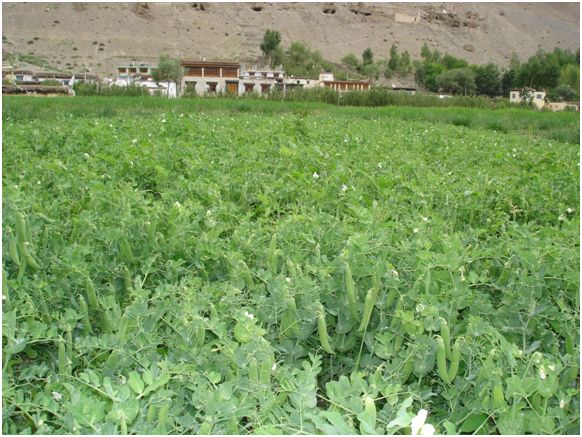
Agriculturally and economically this region has been very poor in the past. As late as the eighties, the people of this region were undertaking subsistence farming.
They used to produce naked barley and black peas for their own consumption. They would make porridge from barley called ‘Tsampa’ and a local fermented beverage called ‘Chhang’. In addition, they would raise some livestock for their own use.
It was in the late eighties that the agriculture department encouraged green pea’s production in Spiti Valley.
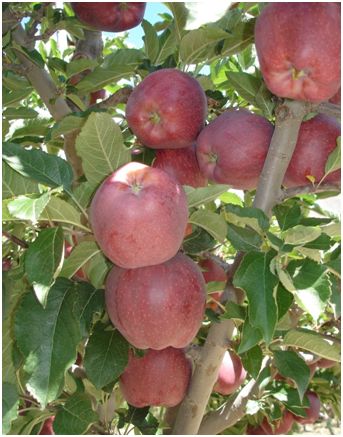
As a result of parallel land and irrigation development efforts mainly under Desert Development Project and active participation of people, the pea production picked up steadily in the region.
Initially, the productivity was very low at 5 quintals per hectare only. However, with the introduction of superior seed at subsidised rates, fertilizers and farmers’ increasing skill over time, the productivity increased substantially.
Now, Spiti sub-division has an area of approximately 2,500 hectares under peas with a production of around 27,000 metric tonnes.
The exceptional edible quality of podsis another characteristic of peas produced in this region with minimum use of pesticides and farmers have been able to fetch on-farm prices of as high as Rs.40/- per kg of green peas.
Another silent revolution was brought on by Dr. YS Parmar University of Horticulture and Forestry, Regional Research Station at Tabo.
With its mandate to work only on horticultural technology for this climatically distinct region, basic research on apple and other temperate fruits’ production was started at the station after the inception of the university in 1985.
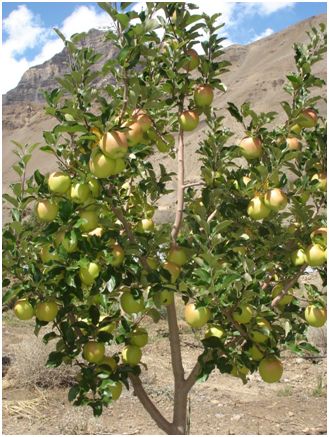
The plantations of apples, apricots and almonds were developed at the station. The apple and other fruits’ planting material were introduced for evaluation from leading PCDOs of State Horticulture Department and main university nurseries at Kinnaur and Solan.
Despite the obvious bottlenecks scientists sat down on the task of developing suitable technology for the benefit of the poor peasantry of Spiti Valley.
The university scientists found apple production suitable up to 3200 masl in Spiti Valley.
After seeing the success of apple production at University Research Station, Tabo, some enterprising farmers of Tabo, Poh and Hurling villages started planting apple plants, and that laid the foundation of a thriving apple enterprise in Spiti Valley.
The apple production in the valley received a further boost when the university started producing the apple and other fruit nursery plants in greenhouses at Tabo and farmers were able to get locally produced and acclimatised apple plants at affordable prices.
Thus, began the horticultural revolution in this remote and economically backward region.
Today the university has established a flagship orchard in Spiti Valley where the latest technologies such as drip irrigation and fertigation are being routinely used and demonstrated to the farmers.
The apple being produced in this region has established a distinct identity of its own because of its beautiful and spotless appearance, uniform colour, flavour and aroma.
The quality of apple produced in the valley is exceptionally superior and has fetched a price premium of up to Rs. 500/- per box over the Shimla apples.
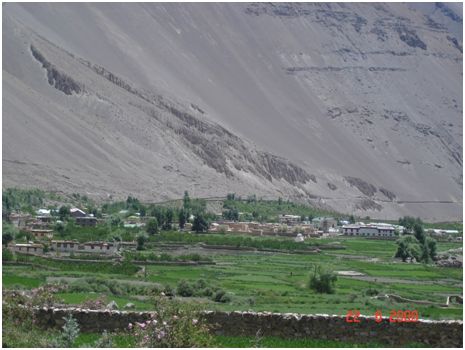
With the tribal farmers having very small land holdings in this area and a single growing season, the cultivation of crops like peas and apples has proved a boon for their economic upliftment and consequent fulfillment of the promise of a happy and prosperous life for the generations to come.



